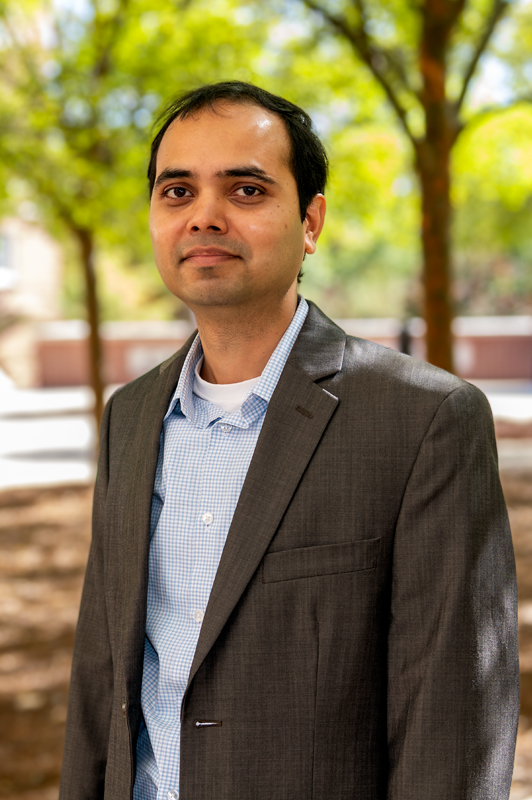Aerospace engineering assistant professor to research modeling of fluid-structure interactions in high-speed flows
Published: Sep 25, 2025 9:40 AM
By Dustin Duncan
Design of next-generation aerospace vehicles and civil infrastructure depends on accurate, cost-effective modeling of compressible flows — environments where high air speeds lead to significant changes in air density.
Nek Sharan, assistant professor of aerospace engineering, has received a $290,000 National Science Foundation grant to develop advanced computational tools for modeling how fluids and structures interact in compressible flows.
“Accurate predictions of fluid-structure interactions at high speeds — transonic, supersonic and hypersonic regimes — are crucial in numerous applications,” Sharan said. “But existing tools are either too computationally expensive or inaccurate to be used in the later stages of the aircraft or spacecraft design cycle, where quantitative accuracy is really important.”
Sharan said potential applications for this research are far-reaching, including making supersonic commercial aviation a reality and improving aircraft safety and engine efficiency. “A flight from the East Coast to the West Coast, which currently takes roughly five to six hours, could be reduced to less than three hours with supersonic commercial flight,” he said.
As hurricanes become more intense, there’s increasing interest in fortifying bridges, buildings and other infrastructures to withstand Category 5 storms and strong, sustained winds. Sharan’s research could help inform design standards for infrastructure built to endure extreme weather.
Lastly, Sharan said this research could also support space exploration by advancing propulsion systems that generate greater thrust with less fuel.
“All of these challenges depend on understanding and accurately modeling fluid-structure interactions in high-speed, compressible flows,” he said.
Traditionally, engineers have relied on costly flight tests or wind tunnel experiments to evaluate designs, both of which involve significant expenses and safety risks. Computer modeling offers a faster, safer alternative, allowing engineers to explore many design options at a lower cost. Sharan’s project focuses on developing advanced tools to make these simulations more accurate and efficient.
“That’s where this project comes in,” Sharan said. “It aims to develop robust computational methods and the mathematical theories needed to analyze them, applying these tools to high-speed flow problems.”
The project’s immediate applications include predicting wing flutter, a dangerous vibration that can occur as an aircraft nears or exceeds the speed of sound. The same computational tools can help model how buildings and bridges respond to hurricane-force winds or optimize the performance of rocket and gas turbine engines that operate under extreme pressure conditions.
To ensure accuracy, Sharan will validate his models using existing experimental and flight test data. He will draw on the experimental data from NASA facilities, including the Marshall Space Flight Center, which has recently conducted detonation experiments involving high-speed, compressible flows with combustion as well as data collected by experimental groups in the aerospace department. These datasets will provide critical benchmarks for validating his computational models.
Beyond research, the project has a strong educational component. Sharan’s team (including undergraduate researchers) will create virtual reality visualizations of its simulations for events like Auburn’s annual E-Day, giving students an immersive, hands-on look at how high-speed flows behave.
“This work brings together applied math, engineering and computing,” Sharan said. “We want to give engineers better tools to tackle some of the toughest problems in aerospace — and beyond.”
Media Contact: , dzd0065@auburn.edu, 334-844-2326
Aerospace engineering assistant professor Nek Sharan works on computational modeling research aimed at improving high-speed flow analysis.


